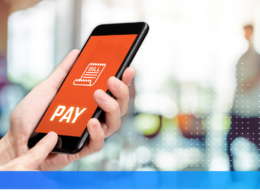Robocalls are frequently used by scammers to steal personal information, earning them a bad name. Automated calls, on the other hand, can be utilised to speed up consumer outreach while still providing critical information.
Robocalls irritate me to no end as a consumer. Their calls come at inconvenient moments in an attempt to induce people to hand up personal information. Some, like the “can you hear me?” ruse, are pure identity theft scams.
A hooded caller has asked for your social security number. Most likely, they posed to be from a bank or another government body.
In this image, a scammer is seen asking for a victim’s social security number. At the very least, the Nigerian Prince has the decency to contact you using a technique that permits you to be duped at your leisure.
Nonetheless, as a corporate investor, I understand the need for robocalls and even advocate for their use in specific situations. Because of all of the spammers out there, even if you try your hardest, your calls will be disregarded.
What are your alternatives?
How to Make Robocalls Work for Your Company
- Do not take advantage of people’s trust by forcing them to sign up for something they do not want.
- Customers should be able to quickly opt-out.
- Respect your customers’ preferences.
- The number of unsettling robocalls is growing.
What is the extent of the threat at this time?
The Transaction Network Services reviewed over a billion daily calls. They discovered that one-third of those calls were either high-risk, fraudulent or simply a nuisance.
Another eye-opening result from the survey is that 24% of calls originate on Monday. The worst day of the week has now gotten even worse.
When making the calls, many robocallers pretend to be someone else. They use call masking strategies to conceal their phone number in order to make it appear as if the call is originating from the victim’s city. What should have been a local phone call becomes an automated operator attempting to take personal information for whatever reason.
Stronger caller authentication is a vital tool in the FCC’s fight against the rise of nuisance robocalls. They’re going after the people who are responsible for the billions of robocalls.
Businesses should be on the lookout for robocalls as well
Of course, robocalls aren’t only a customer issue. Many sales and customer service employees waste time answering phone calls that turn out to be automated systems. This interferes with their efforts to recruit new clients or complete other obligations.
An IVR that prompts the caller to seek a support representative by dialling a button could be a workaround. Because only a human can follow the prompt, this is a useful method for businesses to identify human callers.
The Four Robocall Cardinal Rules for Business
As previously demonstrated, robocalls can be harmful to consumers. Let’s look at how they can help a business.
- There are times when you need to transmit essential information to a large group of people. If a client hasn’t seen you in a while, or if your business is closed on a particular day, you can send them an email reminding them to come in.
- In certain cases, phone calls can be just as productive as email and text messaging. We’ve developed a set of standards for businesses to follow when employing robo call for automated reminders as a result of our thorough study.
1. Customers should be able to choose whether or not to use the service
- Consider that some clients prefer to contact solely via email or text message.
- Give clients the option of receiving automated reminders through a phone call to ensure they know what to expect.
2. Do not take advantage of other people’s confidence
- Do things with other people’s permission only when absolutely necessary.
- It is acceptable to phone someone only once to remind them that their subscription is about to expire. However, calling them incessantly and blindly is not.
- If you’ve sent a cash card to a customer and it hasn’t arrived, simply phone them. They are aware, yet their card is missing.
- Additional phone calls would irritate them even more.
3. Make it simple for customers to opt-out
- If customers do not want to participate in the campaign, they should be able to quickly opt-out.
- The approach should not be impeded by requesting customers to send in their reasons for calling back. Simply fill out an online form or send an email, and you’re done.
- Recognize and Value Customer Feedback
4. Allow those who wish to do so
- You don’t want to come across as aggressive, just like the other callers. It’s also bad form for you and your company if you keep nagging customers to opt-in again.
- Respect your neighbourhood’s “Do Not Disturb” registry.
- It Is Not Impossible to Use Robocalls in Your Business.
- Robocalls are a challenging problem to handle, particularly given the vast number of scammers in the sector. The essential norms of human connection, however, have not changed.
- Use an IVR to automatically check for bots to avoid fraudsters attempting to steal personal information. If you employ automated phone calls to tell your customers of key events, respect their wishes and be transparent and honest about how you interact with them.
- Mondays are obviously not the ideal day to make a phone call.









